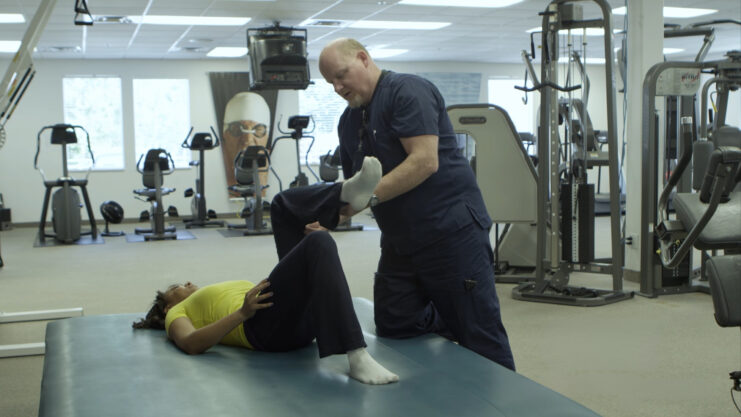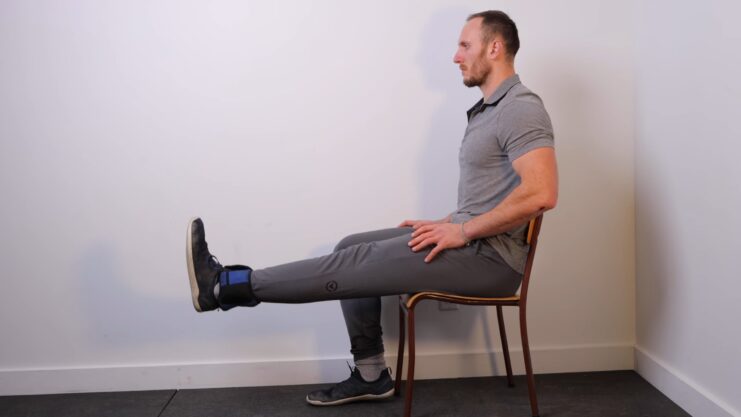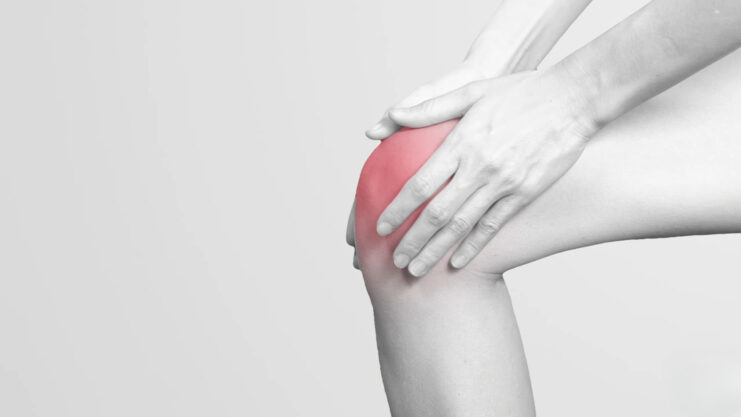Osteoarthritis of the knee is a common ailment that affects millions of people worldwide. This degenerative condition can be painful and debilitating, but with the right knowledge and treatment, it’s manageable. In this article, we’ll delve deep into the subject, breaking down its causes, symptoms, and the various treatment options available. Whether you’re a patient, a caregiver, or just someone curious about the topic, this guide is designed to provide you with valuable insights in an easily digestible format.
Often referred to as degenerative arthritis or wear-and-tear arthritis, is a condition where the cartilage that cushions the bones wears away. This cartilage plays a crucial role in ensuring smooth joint movement. When it deteriorates, bones may rub against each other, leading to pain and stiffness.
The knee, being a major weight-bearing joint, is particularly susceptible to the wear and tear that leads to it. This condition can significantly impact one’s quality of life, making everyday activities like walking or climbing stairs challenging.
What Causes Osteoarthritis?
The exact cause of osteoarthritis remains a mystery to medical professionals. However, several factors are believed to contribute to its onset.
Age is a significant factor. As we grow older, the wear and tear on our joints increase, making osteoarthritis more common in older adults. Being overweight also puts additional stress on weight-bearing joints like the knees, increasing the risk of osteoarthritis. Additionally, previous joint injuries can predispose an individual to develop osteoarthritis in the affected joint later in life.
How Can My Doctor Tell If I Have Osteoarthritis?
Diagnosing osteoarthritis involves a combination of clinical examination and imaging studies. The symptoms can vary, but there are some common warning signs:
- Steady or intermittent pain in a joint: This is often the first sign people notice. The pain might worsen after physical activity.
- Stiffness after periods of inactivity: For instance, your knee might feel stiff when you get up in the morning or after sitting for an extended period.
- Swelling or tenderness: This can be due to inflammation or the formation of bone spurs.
- Crunching feeling or sound of bone rubbing on bone: This occurs when the cartilage has worn away significantly.
It’s worth noting that not everyone with osteoarthritis will experience pain. In some cases, X-rays might show joint deterioration, but the individual feels no discomfort. To confirm a diagnosis, your doctor might ask about your symptoms, examine your knee, and order X-rays or other imaging tests.
How Will My Doctor Treat?

Treatment for osteoarthritis aims to relieve pain, improve joint function, and slow the progression of the disease. The approach is often multi-faceted, involving:
- Medications: Over-the-counter pain relievers and anti-inflammatory drugs can help alleviate pain. If these aren’t effective, stronger prescription medications might be recommended.
- Physical therapy: A physical therapist can teach you exercises to strengthen the muscles around your joint, increasing its stability and reducing pain.
Supplements: A Natural Approach
For years, supplements like Glucosamine, MSM, and Chondroitin were popular for treating knee pain. However, recent studies suggest they might not be as effective as once believed.
Newer supplements that incorporate herbs such as Boswellia Serrata, Turmeric, Ashwagandha, and Ginger have shown promise in alleviating osteoarthritis symptoms. These natural remedies are believed to have anti-inflammatory properties that can help reduce pain and swelling.
Are There Other Treatment Options?
Absolutely. If conventional treatments don’t provide sufficient relief, other interventions might be considered:
- Injections: Pain-relieving injections, often containing anesthetics or corticosteroids, can provide temporary relief. These are administered directly into the affected joint.
- Surgery: In severe cases where other treatments fail, joint replacement surgery might be an option.
What Are Hyaluronic Acid Injections?
Hyaluronic acid is a naturally occurring substance in the synovial fluid of our joints. It acts as a lubricant and shock absorber. However, in osteoarthritis patients, the quality and quantity of hyaluronic acid can diminish.
Hyaluronic acid injections aim to replenish this vital substance in the joint. These injections can offer pain relief that lasts for several months. However, they might not be suitable for everyone and can be expensive. It’s essential to discuss the pros and cons with your doctor to determine if they’re right for you.
Surgical Interventions: When is it Time?
For many individuals with osteoarthritis of the knee, conservative treatments can provide relief. However, when the disease progresses to a point where non-surgical methods are no longer effective, surgery might be the next step.
Joint Replacement Surgery: This is the most common surgical procedure for severe osteoarthritis. The damaged joint is replaced with artificial components made of metal, plastic, or ceramic. The goal is to restore function and eliminate pain. While the idea of surgery might be daunting, joint replacement has a high success rate and can offer a significant improvement in quality of life.
Arthroscopy: This is a minimally invasive procedure where small incisions are made, and a camera is inserted into the joint. Damaged tissue or loose fragments can be removed. However, the benefits of arthroscopy for osteoarthritis are debated, and it’s typically more beneficial for other knee problems.
Lifestyle Changes: Taking Control of Your Health

It might be a chronic condition, but there are steps you can take to manage its impact on your life. Embracing certain lifestyle changes can make a world of difference.
Weight Management: Carrying extra weight puts additional stress on your knees. Even a modest weight loss can reduce knee pressure and alleviate symptoms.
Exercise: While it might seem counterintuitive, regular exercise can help manage osteoarthritis. Strengthening the muscles around the knee provides better support and stability. Low-impact activities like swimming, cycling, and walking are excellent choices.
Assistive Devices: Using aids like braces, shoe inserts, or walking aids can help reduce stress on your knee and improve stability.
Prevention: Can It be Avoided?
While you can’t change certain risk factors like genetics or age, there are preventive measures to reduce the likelihood of developing osteoarthritis or slowing its progression.
Avoid Repetitive Stress: Jobs or activities that involve repetitive knee bending can increase the risk. If possible, alternate tasks or take frequent breaks.
Protect Your Joints: Wear protective gear during sports or physical activities. Ensure that your equipment, like shoes, is in good condition and provides adequate support.
Stay Active: Regular exercise keeps joints flexible and muscles strong. It also helps maintain a healthy weight, further reducing the risk.
FAQ
Can diet impact osteoarthritis of the knee?
Yes, a balanced diet can help manage body weight, reducing stress on the knees. Some foods have anti-inflammatory properties, like fatty fish, nuts, and certain fruits, which might help alleviate symptoms.
Are there any natural remedies for osteoarthritis?
Apart from the mentioned supplements, some people find relief using treatments like acupuncture, massage, or hot and cold therapy. Always consult with a healthcare professional before trying a new remedy.
How long does a knee replacement last?
Most knee replacements can last 15-20 years. However, the lifespan depends on several factors, including the patient’s age, activity level, and the quality of the surgical procedure.
Can osteoarthritis be reversed?
Currently, there’s no cure for osteoarthritis. Treatments aim to manage symptoms and improve joint function. However, research is ongoing, and future treatments might offer more solutions.
Is swimming good for osteoarthritis of the knee?
Absolutely! Swimming is a low-impact exercise that strengthens muscles without putting stress on the joints. It’s an excellent option for those with osteoarthritis.
Final Words
In conclusion, osteoarthritis of the knee is a complex condition, but with the right knowledge and approach, it’s manageable. Whether you’re exploring treatment options or seeking preventive measures, always consult with healthcare professionals.
They can provide guidance tailored to your unique situation, ensuring the best possible outcome. Remember, you’re not alone in this journey, and there’s a wealth of resources and support available to help you lead a fulfilling life despite osteoarthritis.












